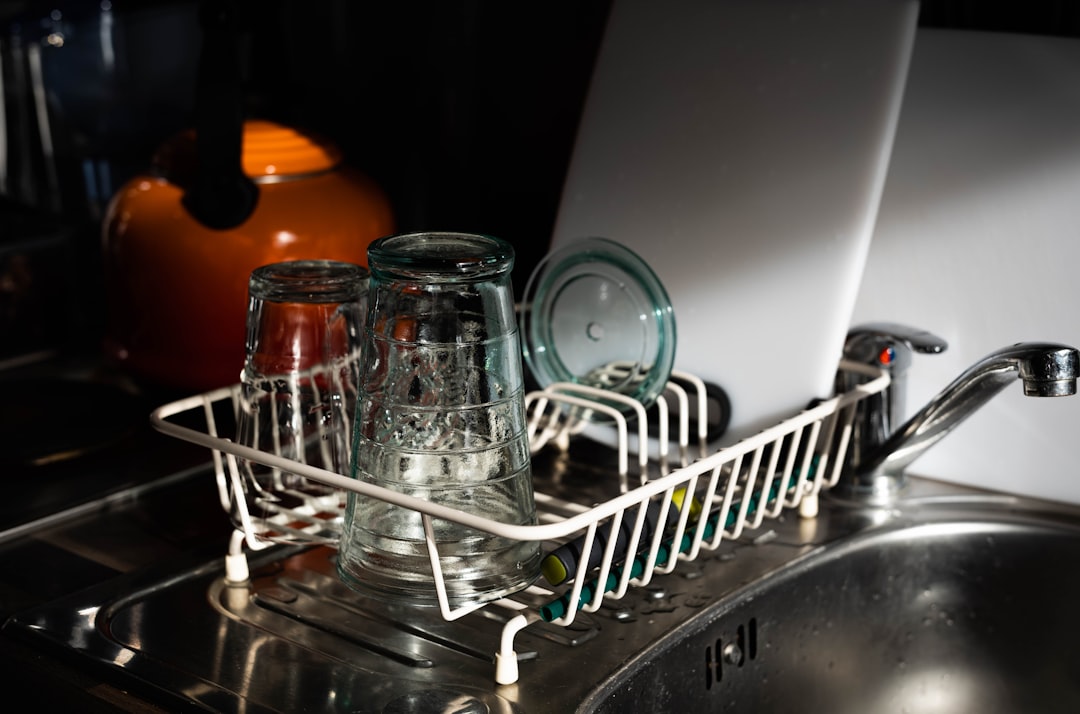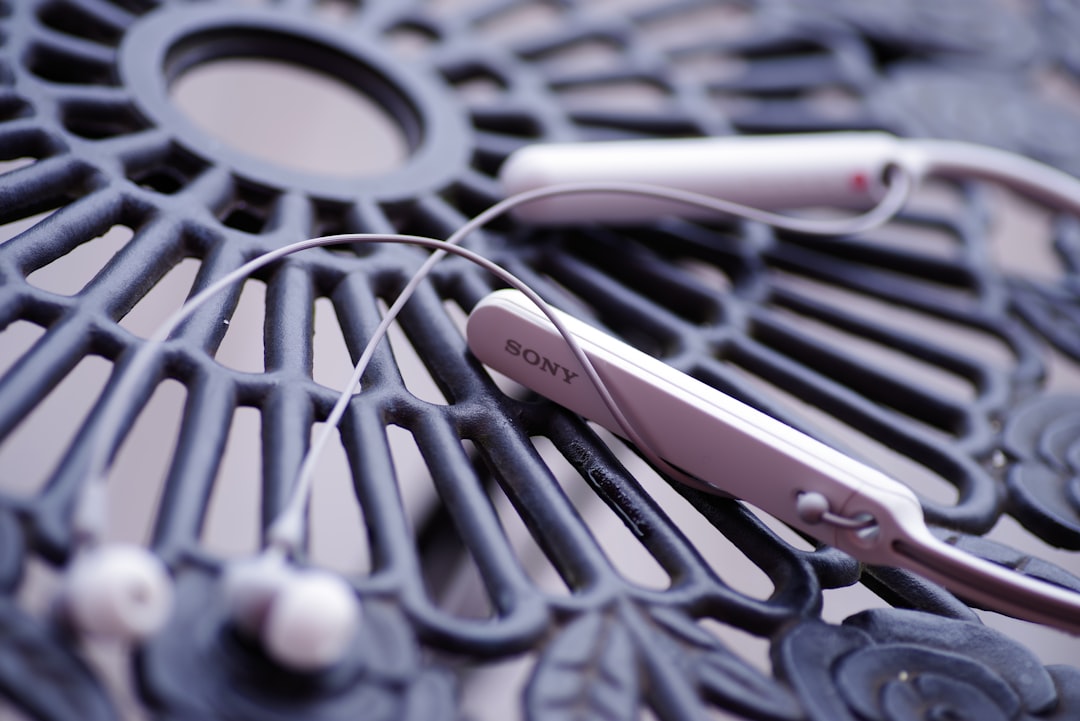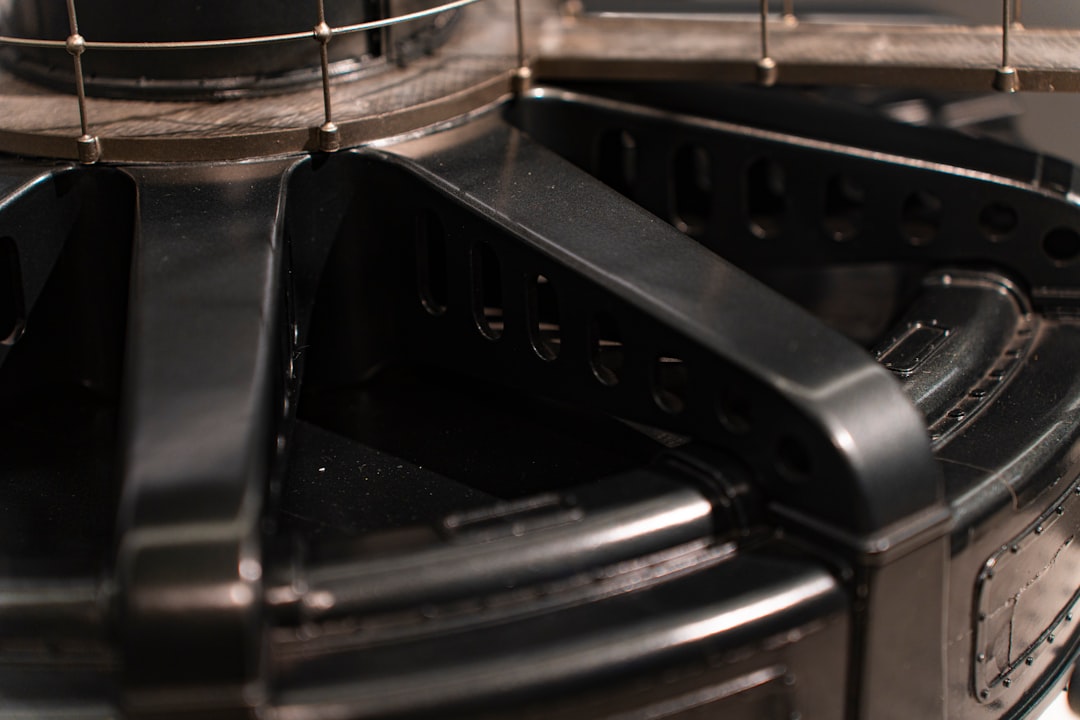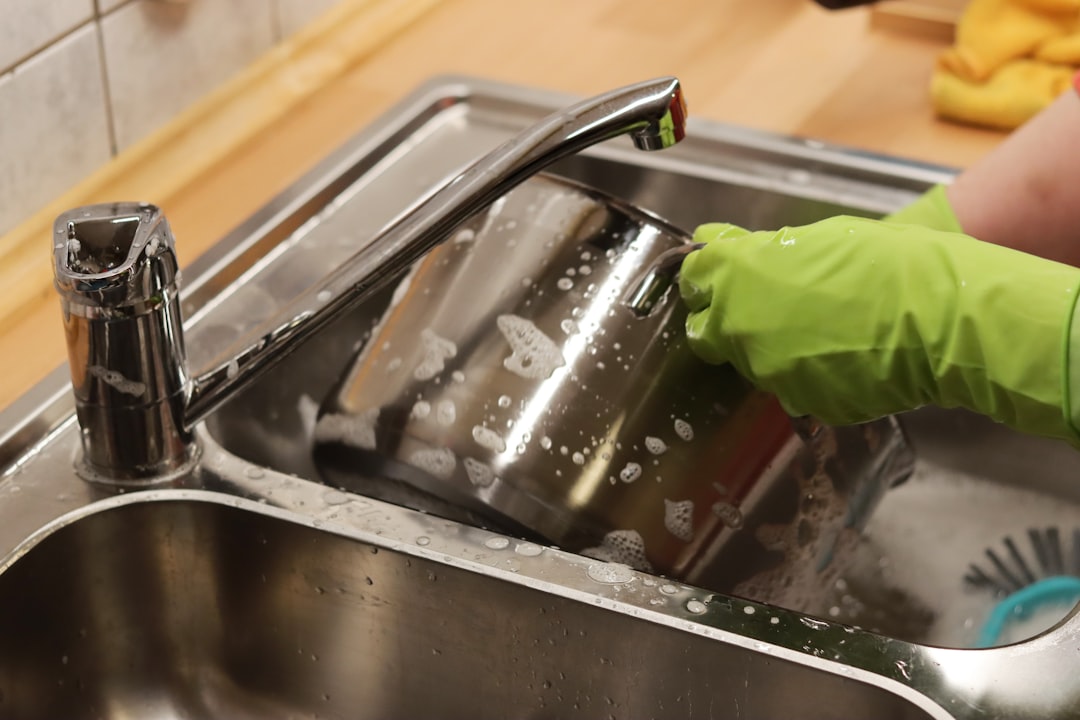

Engage prospects with a scan and streamline customer engagement with FREE QR code marketing tools by Sona – no strings attached!
Create a Free QR CodeFree consultation

No commitment

Engage prospects with a scan and streamline customer engagement with FREE QR code marketing tools by Sona – no strings attached!
Create a Free QR CodeFree consultation

No commitment
Dishwasher repair services face persistent obstacles in bridging the gap between offline customer needs and effective digital engagement. Many repair businesses struggle to track meaningful customer touchpoints, often missing high-value prospects when interactions such as printed invoices, service tags, or manual intake forms are not seamlessly linked back to customer data platforms. As a result, opportunities for future bookings, upsells, or personalized service are lost, and marketing campaigns suffer from incomplete visibility into who actually interacts with their messaging.
QR codes have advanced from simple digital connectors to essential tools that help dishwasher repair providers not only initiate but also track, nurture, and personalize the customer journey. Integrated strategically into repair tags, invoices, warranty cards, or direct mail, QR codes make it easier for both customers and businesses to gather actionable insights, encourage on-the-spot action, and remove friction from both lead capture and ongoing support. Critically, these codes can also surface anonymous engagement, such as those who scan a help guide but never fill out a form, informing future segmentation and targeted outreach.
This article outlines how QR-powered workflows address real service business pain points such as missed prospects, difficulty in surfacing upsell moments, and disconnected offline campaigns. You will find proven strategies to transform analog touchpoints into measurable, high-intent digital interactions, resulting in better lead generation, enhanced upsell opportunities, and a customer experience that encourages repeat business in dishwasher repair.

One ongoing challenge for dishwasher repair services is the friction customers feel when transitioning from paper collateral or in-person support to online service. Traditional printed guides and static business cards rarely prompt meaningful engagement, while paper sign-up forms often result in incomplete or outdated data. Customers who experience a leak or an error code want immediate answers, yet most printed materials do not offer a simple pathway to help. This is where QR codes become the bridge between urgency and action.
QR codes turn every offline surface into a digital entry point. A label inside the dishwasher door can point to a troubleshooting guide, a sticker on the service invoice can link directly to appointment scheduling, and a magnet on the fridge can lead to maintenance tips or warranty registration. The result is faster access, cleaner data, and better attribution. Platforms like Sona QR bring these scans into a single dashboard so repair companies can measure engagement, trigger automatic follow-ups, and update destinations without reprinting.
Example: A QR code affixed inside a dishwasher door lets customers instantly access maintenance schedules, error code explanations, or submit a service request. These simple checkpoints reduce the risk of missing valuable repeat business and reveal new engagement signals that would otherwise remain invisible. Over time, you can analyze the timing and frequency of scans to identify seasonal demand patterns or recurring issues that inform staffing and inventory planning.
For many repair providers, the hidden cost of traditional workflows lies in an inability to turn offline encounters into actionable data. When service invoices or appliance labels lack interactive connectors, opportunities for lead generation, upsell, and feedback are routinely lost. Even well-designed brochures fall short if customers are forced to type long URLs or call during business hours.
QR codes address these gaps by connecting customers to the exact digital resource they need, when they need it, and by capturing valuable context about the interaction. Whether the goal is to book appointments faster, convert warranty registrations, or collect measurable feedback, QR codes provide the immediacy and trackability that paper cannot match.
By embedding QR codes at every customer interaction point, modern dishwasher repair providers ensure no potential lead or support need remains invisible. The result is better conversion rates, tangible attribution, and stronger customer relationships nurtured across the entire service lifecycle.

Repair businesses often find themselves limited by traditional static collateral that fails to enable or track engagement. The right QR code format, paired with a clear destination, connects a physical touchpoint to a digital action that you can measure. When you match formats to common service scenarios, customers get faster answers and your team gets cleaner data.
Focus on the formats that most directly support appointment booking, warranty registration, troubleshooting, and customer support. In practice, this means prioritizing dynamic web links, prefilled forms, and messaging initiators that lower friction. Use Sona QR to generate, label, and update all formats in one place so you can iterate rapidly.
Dynamic QR solutions are particularly useful in this vertical because service content changes frequently. As manufacturers update error codes or as seasonal promotions rotate, you can switch the destination behind a printed QR without redesigning your materials.

Understanding where opportunities are missed is essential for service providers striving to maximize every touchpoint. In dishwasher repair, the most underutilized surfaces tend to be invoices, appliance labels, parts packaging, and vehicles. Each of these can become a reliable source of measurable demand if equipped with clear calls to action and trackable QR codes.
Map your customer journey and identify where people pause or drop off. Then introduce QR codes that eliminate extra steps and capture intent. Track the performance of each placement so you can double down on the ones that drive bookings, reviews, and repeat business.
Consistently placing QR codes across these touchpoints ensures minimal lost prospects and maximizes the potential for recurring revenue. Over time, you will build a data-rich picture of your service area and refine your marketing mix based on what actually works.

Missed follow-ups and untracked customer intent represent costly gaps in the repair funnel. Thoughtful QR code deployment resolves these pain points by reducing friction and capturing context. When a customer can book or get help in two taps, conversion rates climb and your team gains the oversight required to allocate resources intelligently.
Prioritize use cases that meet customers where they are. Not every scan needs to lead to a sale; a scan that informs a DIY fix still signals brand value and future purchase likelihood. With dynamic QR codes and segmented destinations, you can guide different audiences to the right next step.
These workflows address both tactical needs, such as faster scheduling, and strategic priorities, such as building loyalty and cross-sell potential. Each scan becomes a data point that guides personalized follow-up.
A recurring frustration in appliance repair marketing is the difficulty of nurturing leads who show intent without formally identifying themselves. QR code workflows capture scan context, which lets you segment audiences by intent and journey stage even when a form is not completed. With a centralized system like Sona QR, these segments can automatically sync to your CRM and ad platforms for timely follow-up.
Start by assigning unique QR codes to distinct scenarios: emergency repair, routine maintenance, troubleshooting, warranty, and review or referral. Label each with the placement and CTA. Then tag scans with UTM parameters to capture channel and campaign, and use geolocation when that data is available to understand local demand patterns.
By feeding these behavior-rich segments into your marketing stack, you can retarget QR scanners through email, SMS, or paid ads with precision. For a deeper view on buying signals, see Sona’s blog post on intent data. The impact is more relevant messaging, reduced wasted spend, and higher lifetime value.
Consistent messaging and engagement across all customer touchpoints is often held back by siloed offline and online campaigns. Disconnected efforts lead to wasted ad spend, inconsistent customer experiences, and diminished trust. QR codes act as connectors that unify channels, shorten the path to action, and generate shared data that all teams can use.
When you pair QR-enabled print with digital retargeting and CRM automation, every offline interaction becomes measurable and actionable. This tight integration lets you attribute revenue to specific placements and personalize follow-ups based on real behavior rather than assumptions.
With a centralized platform like Sona QR, you can manage all codes, monitor performance, and sync scan data with your CRM and ad accounts. This creates a connected offline-to-online funnel that scales with your business.
Launching an effective QR program requires clarity of purpose, thoughtful design, and a plan for measurement. The following steps translate strategy into execution so you can roll out campaigns that drive bookings, capture feedback, and build retention. Use them as a blueprint for pilots and for multi-location deployments.
Before you begin, assign owners for creative, placement, and analytics. Label each QR with a unique identifier and ensure you have a process for testing scans on multiple devices and under different lighting and distance conditions. Then move through the steps below.
Clarify the outcome you want to achieve. Examples for dishwasher repair include lifting appointment bookings within 24 hours of service, increasing warranty registrations within seven days, or capturing more five-star reviews after repair completion. A single campaign can have multiple goals, but each QR should focus on one primary action to reduce confusion.
Dynamic QR codes are essential if you need to update the destination, collect analytics, or run A/B tests. Static codes are fine for permanent destinations that require no tracking, such as a PDF user guide.
Customers will not scan generic or confusing codes. Design QRs with brand colors and add a descriptive frame so people know exactly what they will get. Then test rigorously before deploying.
Start with high-impact placements where leads are most likely to be lost or untracked. For dishwasher repair companies, priority placements include invoices, appliance labels, van decals, direct mailers, and parts packaging.
Without analytics, you are guessing. Use a platform like Sona QR to track scans by time, location, and device, then connect that data to conversions in your CRM. Review performance weekly at first, then monthly.
Some providers automate this entire process so that a scan triggers immediate follow-ups and segment updates. Sona QR makes it easy to enrich contacts, alert teams, and sync audiences for retargeting so you continually reduce lead leakage and boost repeat business.

A chronic challenge for appliance repair brands is associating specific offline marketing activities with real revenue outcomes. Without reliable attribution, it is hard to optimize spend or prove ROI, and even harder to double down on what is working. QR analytics fill that gap by turning scans into trackable events that can be tied to bookings, repeat service, and upsells.
Start by centralizing your codes and setting clear measurement rules. Track scans by placement, time, and device. Add destinations that capture form fills or clicks-to-call. Then integrate your QR platform with your CRM, invoicing, and marketing tools so you can connect scans to closed jobs and revenue totals.
When tracking is implemented correctly, your team can act decisively at every stage of the customer lifecycle. The result is a virtuous cycle of testing, learning, and optimizing that makes every dollar of offline marketing spend work harder.
Many repair companies see initial QR adoption stall because they treat codes as a novelty rather than a system. Success requires intentional placement, measurable goals, and automated follow-up. It also requires educating technicians and office staff so they can confidently present QR-enabled options to customers.
Focus on a small set of best practices and bake them into your workflows. Over time, standardize code naming conventions, asset labeling, and reporting cadences. Review results in team meetings and adjust placements or CTAs based on performance.
Start creating QR codes for free: Sign up.
Even experienced repair services underestimate the power of connecting offline and online. The most effective deployments are simple, branded, and placed exactly where customers need help. Over time, modest tests compound into a robust system that captures demand at the source.
Consider these practical examples for inspiration. You can replicate them with your own branding and measure performance in Sona QR, then refine designs and offers based on early results.
These approaches turn everyday materials into interactive, measurable, high-ROI assets. They solve for missed opportunities after service and create reliable channels for promotion and feedback that would otherwise be lost.
Repair businesses often falter not in intent but in execution. Generic codes, poor placement, and unmeasured outcomes are common pitfalls. If customers do not know what they will get by scanning, they will not scan. If your team does not measure beyond the scan, you cannot optimize.
Treat QR programs as living systems that evolve with your service patterns and customer feedback. Invest in design clarity, transparent incentives, and disciplined analytics. Encourage your team to identify new placements and to share insights from customer interactions.
QR codes have emerged as powerful enablers for dishwasher repair businesses, turning once-invisible touchpoints into actionable, measurable, and revenue-driving customer interactions. By thoughtfully integrating dynamic QR solutions across the service journey, providers solve long-standing challenges such as untracked leads, missing behavioral signals, and disconnected campaigns while steadily building high-value, personalized engagement at scale.
Embracing QR-powered processes does not just boost appointment rates or streamline troubleshooting; it lays the foundation for a resilient, data-rich marketing and operations strategy that delivers superior customer experiences and measurable business growth. To get started, generate your first set of dynamic QR codes with Sona QR, connect them to clear CTAs on invoices and appliance stickers, and sync scan activity to Sona.com for attribution. Within weeks, you will know which placements drive bookings, which messages earn loyalty, and how to expand with confidence.
QR codes have revolutionized dishwasher repair services by transforming how technicians and customers access vital information quickly and efficiently. From providing instant access to troubleshooting guides and instructional videos to streamlining appointment scheduling and customer feedback, QR codes enhance every touchpoint in the repair process. Imagine a customer scanning a code on their dishwasher to instantly connect with your service history, repair tips, or special offers—empowering them while driving loyalty and repeat business.
With Sona QR, you can create dynamic, trackable QR codes that update in real time without the hassle of reprinting, allowing you to tailor content and monitor engagement effortlessly. This means every scan becomes a measurable opportunity to improve service quality, accelerate repairs, and increase customer satisfaction. Start for free with Sona QR today and unlock the full potential of QR codes to elevate your dishwasher repair services into a seamless, data-driven experience.
Look for repair providers that use QR code technology to offer seamless digital engagement, track customer interactions, and provide fast access to troubleshooting and booking, ensuring better service and accountability.
Common issues include leaks, error codes, and appliance malfunctions that require prompt troubleshooting and professional scheduling, which can be facilitated through QR code access to guides and support.
The article does not specify average costs for dishwasher repair services.
Use QR codes placed on appliance doors or magnets to access maintenance schedules, seasonal tips, and troubleshooting guides that help with regular upkeep and early issue detection.
Signs include persistent leaks, error codes displayed on the appliance, or performance issues that prompt scanning QR codes for troubleshooting or contacting repair services.
QR codes bridge offline and online interactions by providing instant access to troubleshooting, appointment booking, warranty registration, and feedback, while enabling repair companies to track and personalize customer engagement.
Effective placements include appliance doors, service invoices, parts packaging, direct mail, van decals, and maintenance magnets to capture leads and facilitate quick customer actions.
Dynamic QR codes with web links, prefilled forms, SMS or email initiators, vCards, Wi-Fi access, and app downloads are ideal to enable booking, troubleshooting, warranty registration, and on-site support.
By using QR code analytics to monitor scan times, locations, and conversions, integrating scan data with CRM and marketing platforms to attribute revenue and optimize campaigns.
Assign unique, clearly labeled QR codes with strong calls to action, test for scannability, deploy at strategic touchpoints, educate staff and customers, and integrate scan data with automated follow-ups and CRM systems.
They assign unique QR codes to specific scenarios, tag scans with campaign details, segment audiences by intent and journey stage, and sync data with CRM and ad platforms for precise retargeting.
It unifies offline and online campaigns, shortens the customer path to action, generates measurable data for all teams, and allows personalized follow-ups that improve customer experience and ROI.
Avoid generic codes, poor placement, lack of measurement, unclear calls to action, and insufficient staff training to ensure customers understand benefits and scan rates increase.
QR codes provide instant access to targeted troubleshooting guides and priority booking, reducing wait times and unnecessary support calls.
QR codes create a frictionless path for customers to register warranties quickly, helping repair teams gather data for future outreach and upselling opportunities.
Use Sona QR's trackable codes to improve customer acquisition and engagement today.
Create Your FREE Trackable QR Code in SecondsJoin results-focused teams combining Sona Platform automation with advanced Google Ads strategies to scale lead generation

Connect your existing CRM

Free Account Enrichment

No setup fees
No commitment required

Free consultation

Get a custom Google Ads roadmap for your business






Launch campaigns that generate qualified leads in 30 days or less.
